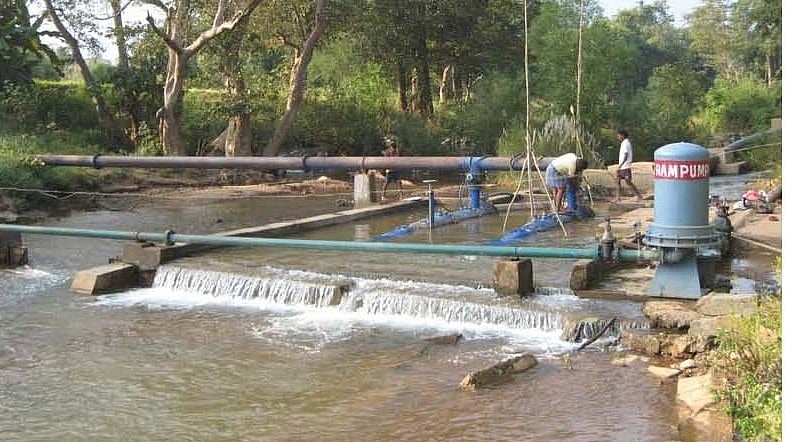
The water pumping system at Taipadar village in Bastar, Chhattisgarh.
Credit: IISc
Bengaluru: The efforts to address irrigation scarcity in Chhattisgarh, led by an Indian Institute of Science (IISc) researcher over 10 years, have resulted in a sustainable water pumping system that requires zero electricity, in a village in the state’s Bastar district.
The project in Taipadar village, led by Punit Singh, Associate Professor at the Centre for Sustainable Technologies, IISc, uses low-head check dams and cascades of such dams along rivers, with turbine pumps installed to pump water without any electricity.
The turbine uses about 90 per cent of the river water flow at low head to generate power, specifically torque and speed, which is used to drive standard submersible multi-stage pumps. “The novelty lies in the precise design of the system. Depending on specific site conditions, where the water head ranges from 2-4 metres, the objective is to lift and transport water to different elevations, usually between 15 and 25 metres, or even up to 30 metres as required,” IISc said.
Singh started working on developing turbine pumps for electricity generation during his PhD at the Karlsruhe Institute of Technology, Germany. On his return to India in 2009, he pursued the possibility of deploying ram pumps in Chhattisgarh, starting with Taipadar. The KSB Pumps Trust in Germany sponsored two turbine pumps with power generation capabilities. Singh invested about Rs 50 lakh in a ram pump sourced from Rife, USA, and in the three years-long construction work.
Scaling up the promise
The project holds promise for a large part of southern Chhattisgarh’s tribal-majority areas that lack reservoir-based irrigation. It was supported by a collaboration of IISc’s Foundation for Science Innovation and Development and the Chhattisgarh Water Resources Department, formalised in December 2022.
Over the next few years, the collaboration will focus on installing one or two pumps on each dam, along with piping, storage, and canal networks. “Building 25 per year is the first target and then, based on the success, it could be scaled up to all the 400 or more dams,” Singh said.
Each project will irrigate about 100-150 acres for rabi and summer crops, depending on the conditions and design of the turbine and pumps. The technology will free the farmers near the banks from using groundwater, allowing levels to rise. It is capable of being reproduced in large parts of India that offer perennial water flow, Singh said.